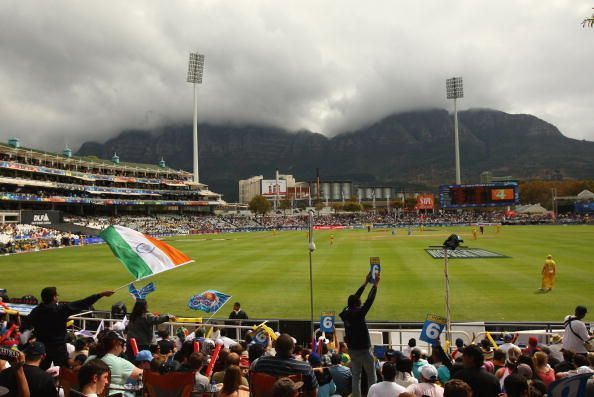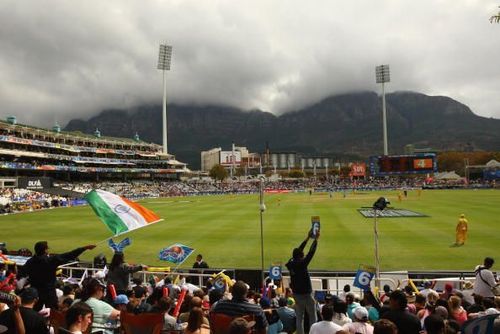
IPL 12 - How Far Have We Come from IPL 1?

To identify the legacy, that IPL has built around itself through the last decade and more, there perhaps can be no other explicit example than Washington Sundar.
In 2008, when Brendon Mccullum was smashing the RCB bowlers to all corners of the Chinnaswamy stadium, Washington was an eight-year-old kid, in Chennai. He, just like any other kid of India, dreamt of growing up to be a cricketer. A decade later, Washington, in the twilight of his teenage years, ironically found himself in the same IPL team with the first hero of IPL, Brendon Mccullum. Perhaps, to add further to the coincidence, both Bazz and Washington represented RCB, the same franchise, that Mccullum himself massacred almost a decade back, in the first ever IPL match.
Commercial Success of IPL as a Brand
IPL has come a long way, from what it was back in 2008, purely in terms of money involved in the game. Star India has bought the broadcasting rights of IPL (2018-2022) for a whopping 16347.5 crores. Just to put this massive amount in perspective, this translates to the fact, that BCCI will earn ₹54.5 crores every match by selling the broadcasting rights to Star India. The term, that is of so much importance here, is 'every' i.e. not only the playoffs or the final; for every ordinary league match (be it Match no. 24 or 49), the income from the match, only through broadcasting will be 54.5 crores. That gives us an idea, of how the idea of IPL has grown to be such a massive commercial hit for BCCI, making it one of the richest cricket bodies in the world.
Besides BCCI, the money for the players from the franchises has also increased exponentially. Before the IPL, there were some 15-20 Indian players at the top level, who were making a livelihood out of the game of cricket. Now, with IPL, more and more players are coming into the game professionally, and the pool of 15-20 players at the topmost level, has broadened to a list of 45-50 players, who are looking at this game, as the primary source of income. This is only enriching Indian cricket as a whole, and looking back, it can easily be said that IPL is the best thing that had happened to Indian cricket (if not World Cricket), 10 years back.
Senior Pros vs Young Guns- Back to Square One
During the initial years of IPL BCCI decided to go for marquee Indian players to represent each IPL team, in order to establish its brand value. Thus Sourav Ganguly was assigned to KKR, Sachin to MI, VVS Laxman to Deccan Chargers (Hyderabad), Rahul Dravid to RCB, Virender Sehwag to DD and so on. With the tie-up of these star players to the respective franchises, came the uninhibited fan support, that these superstars brought along with them to the respective teams. However, after the glitz of the first season got over, team owners started to realize, that these marquee players (in their mid-30s) were nearing the twilight of their careers. Hence, the sense of winning matches and tournaments superseded emotions, and the marquee 'aged' players got stripped of their leadership status and they moved on to become mentors of their respective teams. Hence, began a massive uproar in IPL, which gradually spread to world cricket, that stated: "T20 cricket is exclusively for the Young Generation". The argument got ignited further, when after a disastrous Australian Summer for the Indian team in 2012, the contemporary captain MS Dhoni, came out in a press conference, and stated the importance of young legs on the field, in place of the senior players.
The idea was slowly beginning to trend in world cricket, that if you are past your early 30s, you have perhaps played your last T20 or IPL match for your side.
However, a decade from the inception of this cricketing fiesta called IPL, things seem to return to square one. It seems, that the early 30s and perhaps the mid-30s players are returning back to T20 cricket and specifically IPL. Let us take a look at a few stats to bolster this argument. The average age of the top ten run-getters of IPL 2008, was 28.7 years. The number increased to 29.1 years, in 2012 and finally 30.6 years in IPL 2017. The same IPL teams, who were filling their squads with the early 20s and mid 20s players, in the first few seasons of IPL, are gradually inclining towards the senior pros and proven performers in their mid-30s. And finally, to put a seal of authenticity on this argument, the same Indian captain, who stated the importance of young legs on the field in the 2012 Australian Summer, came out as the captain of the Chennai Super Kings,in front of the press, 6 years later and stated the importance of senior seasoned performers in the game of T20 cricket. Consequently, Dhoni went on to form an 'aged' CSK team, whose average age came up to be somewhere in the mid-30s. Captain cool's theory was further proved, when the 'Whistle Podu' gang, scripted a dream return from their exile, to IPL, by winning the coveted IPL trophy in 2018.
Cricket extending horizons
During a time, when ICC is getting slammed on all quarters, for hosting a 10 team world cup and restricting cricket to the few top nations, it is indeed a surprise, that IPL is not being lauded for promoting the game of cricket to lesser-known nations. When IPL started in 2008, foreign recruits for franchises meant established overseas players from South Africa, Australia, England, New Zealand, Sri Lanka, who has had more than decent records in international cricket. Gradually, through the last 10 years of IPL, the importance of the scouts and cricket analysts for each franchise increased and the search for overseas players with X factor extended to Bangladesh, Ireland, Netherlands, Zimbabwe, Afghanistan and even Nepal. Now, associate nations are looking at IPL as a motivation to be diligent in their games as they have become well aware of the fact that consistent exhibition of performance even at the associate level, may land them up with hefty IPL contracts. The change in the pattern of overseas recruits, may be termed as the biggest change in the course of IPL I am pretty sure, that no cricketing analyst would have predicted a decade back that IPL franchises, would be paying ₹9 crores, to buy a 19-year-old Afghanistan leg spinner, as the lead spinner of an IPL team.
Conclusion
IPL has been the bandwagon of Indian cricket for the last decade. Not only, has it established BCCI as the richest cricketing body in the world, it is also providing India consistently with a pool of off-the-shelf kind of players, who are easing into international cricket, and performing extremely well. IPL so far, in spite of a few controversies here and there, has been a massive success, to say the least. Let us hope that, the future seasons of IPL bring in more accolades to BCCI and turns out to be even better for Indian cricket and its fans.